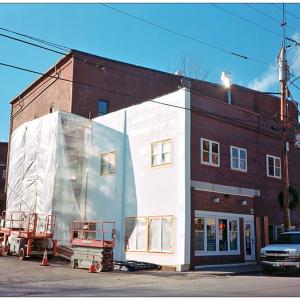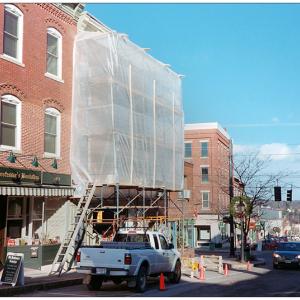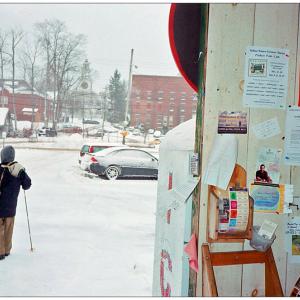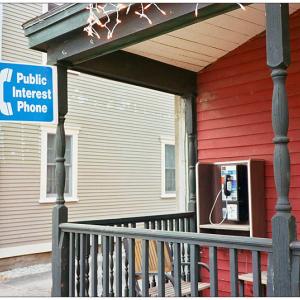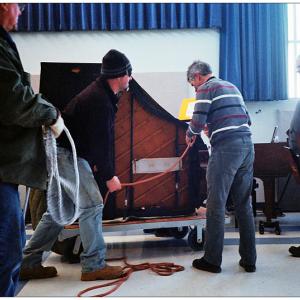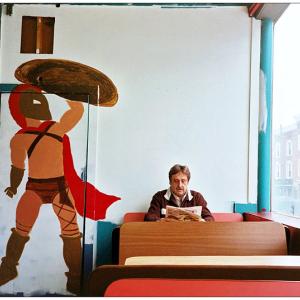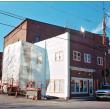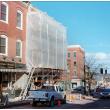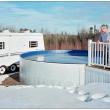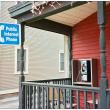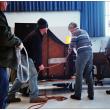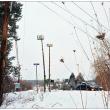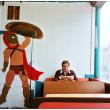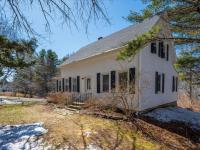What we were doing before we changed plans
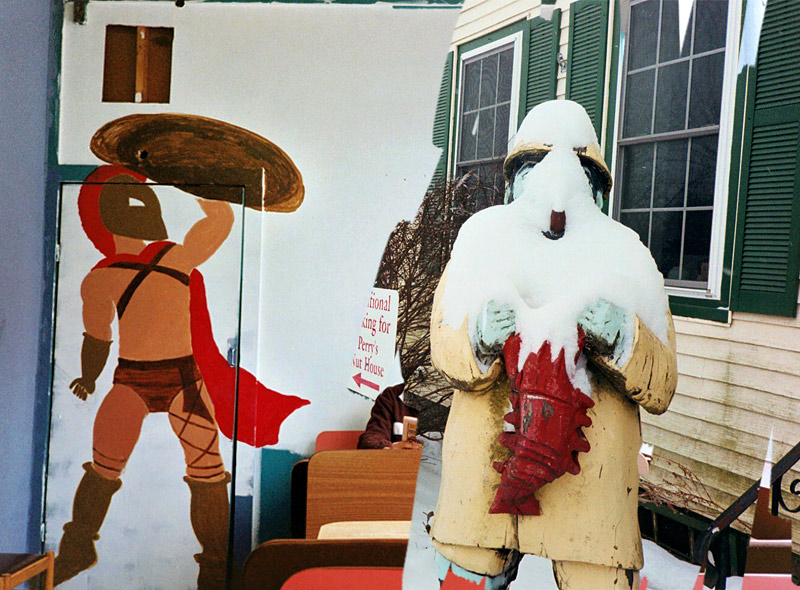 The photos below were taken with a 30-year-old, pocket-sized, 35mm camera (an Olympus XA-2). They come from a single roll of film, and with any luck show a bit of life in the Midcoast between the larger stories of the day. Click on any image to see them all. (Photos by Ethan Andrews)
The photos below were taken with a 30-year-old, pocket-sized, 35mm camera (an Olympus XA-2). They come from a single roll of film, and with any luck show a bit of life in the Midcoast between the larger stories of the day. Click on any image to see them all. (Photos by Ethan Andrews)
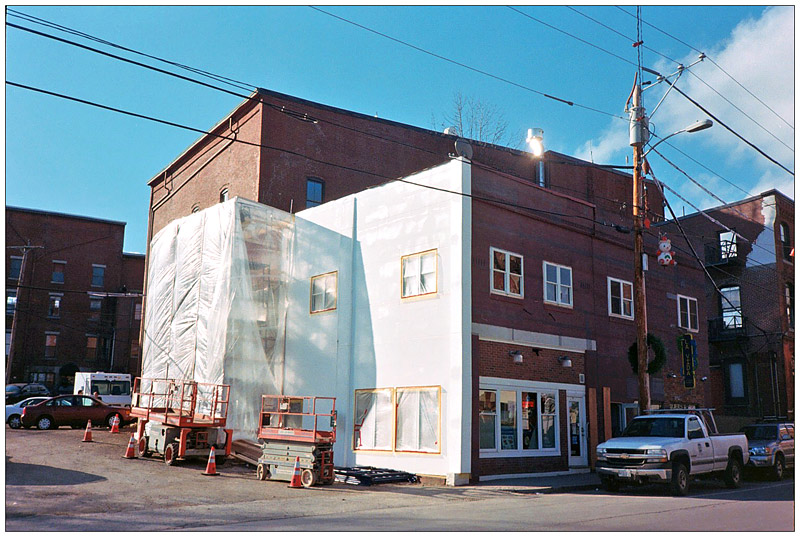 BELFAST - A grant for improvements to low-to-moderate income apartments was the catalyst for a major facelift of the High Street Market building this winter.
BELFAST - A grant for improvements to low-to-moderate income apartments was the catalyst for a major facelift of the High Street Market building this winter.
 NORTHPORT - Sledders at the Northport Golf Club disperse after converging on a boy who had the wind knocked out of him after going over a small jump.
NORTHPORT - Sledders at the Northport Golf Club disperse after converging on a boy who had the wind knocked out of him after going over a small jump.
 ISLESBORO - Looking south from Pendleton Point at the southern tip of the island toward North Haven.
ISLESBORO - Looking south from Pendleton Point at the southern tip of the island toward North Haven.
 ISLESBORO - Headlights illuminate the safety net at the front of the Margaret Chase Smith on the last ferry trip off the island.
ISLESBORO - Headlights illuminate the safety net at the front of the Margaret Chase Smith on the last ferry trip off the island.
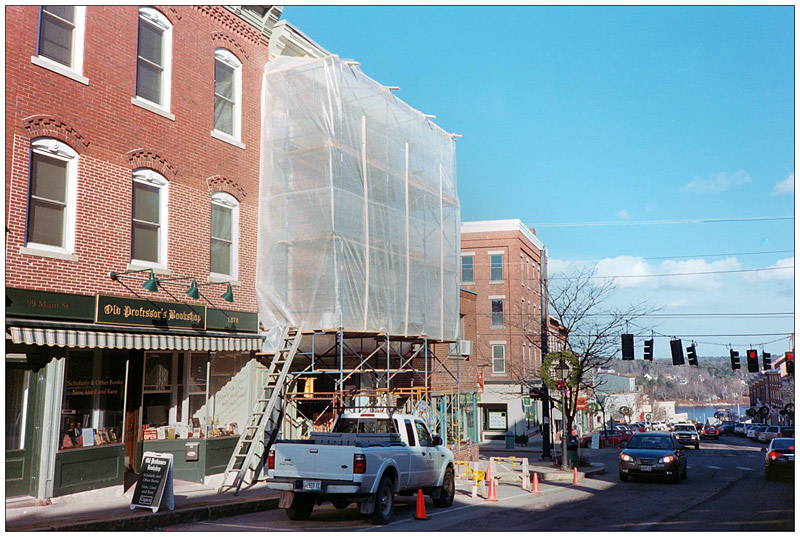 BELFAST - Scaffolding covers Maine Farmland Trust building during renovations that included the addition of a dormer in the rear of the building, a common space-making modification to shed-roofed buildings downtown.
BELFAST - Scaffolding covers Maine Farmland Trust building during renovations that included the addition of a dormer in the rear of the building, a common space-making modification to shed-roofed buildings downtown.
 BELFAST - A Christmas tree in the courtyard of the Waldo County District Courthouse.
BELFAST - A Christmas tree in the courtyard of the Waldo County District Courthouse.
 BELFAST - A snowy day, by the message boards at the Belfast Co-op.
BELFAST - A snowy day, by the message boards at the Belfast Co-op.
 BELFAST - A construction of donated lumber erected at the public landing Dec. 31 in preparation for the 2012-13 New Year's Eve bonfire.
BELFAST - A construction of donated lumber erected at the public landing Dec. 31 in preparation for the 2012-13 New Year's Eve bonfire.
 BELFAST - John Jewell of Bangor, left, interviews Trevor Burleigh of Old Town at McDonald's for a commercial trucking job.
BELFAST - John Jewell of Bangor, left, interviews Trevor Burleigh of Old Town at McDonald's for a commercial trucking job.
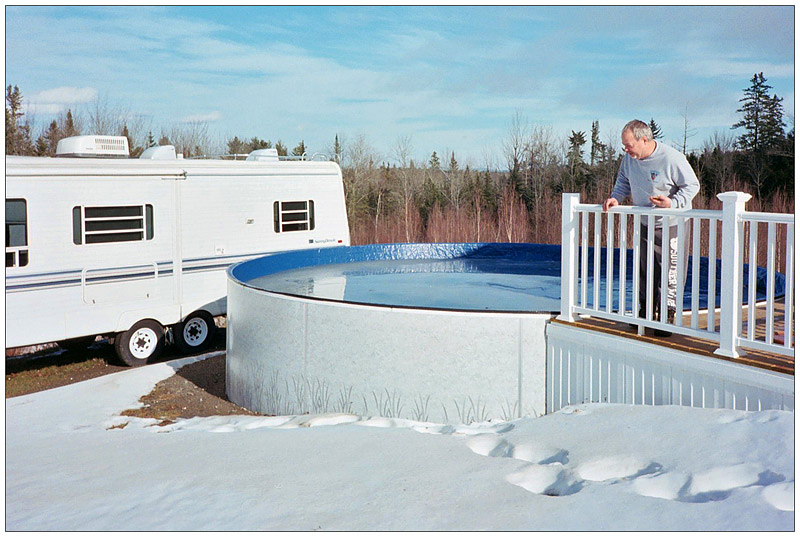 BELMONT - Jon Pinkham looks to his snowy yard for a fence post cap that went missing in January, likely after a storm.
BELMONT - Jon Pinkham looks to his snowy yard for a fence post cap that went missing in January, likely after a storm.
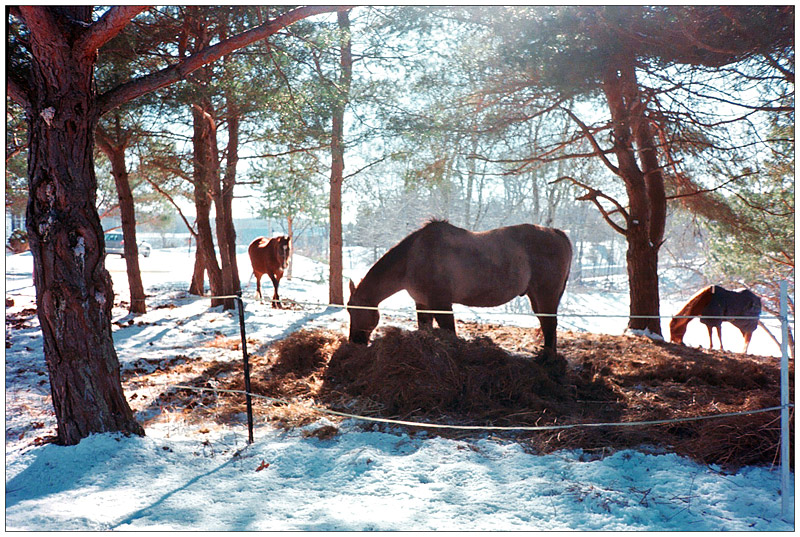 WINTERPORT - Horses in an enclosure near Route 1A.
WINTERPORT - Horses in an enclosure near Route 1A.
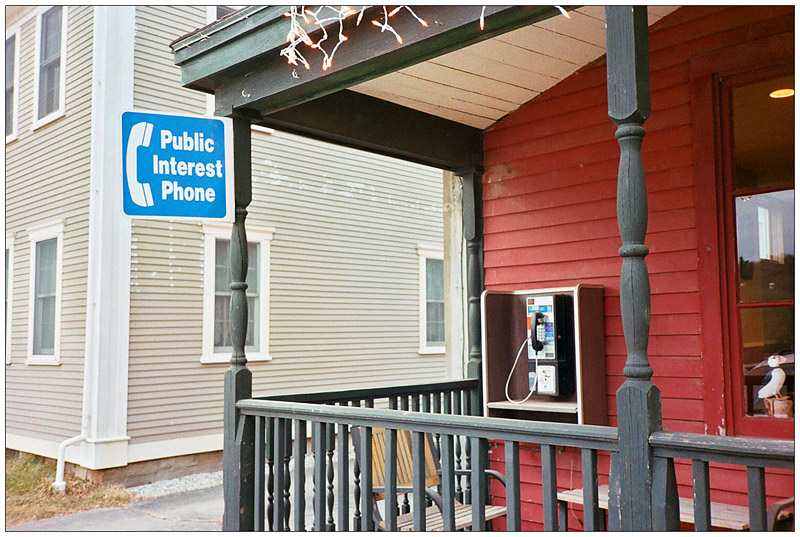 SEARSMONT - A pay phone by another name at Fraternity Village Store. A 2005 Maine law allowed citizens to petition for a "public interest" pay phone in areas where private services had pulled out of the disappearing pay phone market.
SEARSMONT - A pay phone by another name at Fraternity Village Store. A 2005 Maine law allowed citizens to petition for a "public interest" pay phone in areas where private services had pulled out of the disappearing pay phone market.
 PROSPECT - The Verso Paper Co. mill in Bucksport, seen at dusk from the Propsect side of the Penobscot River.
PROSPECT - The Verso Paper Co. mill in Bucksport, seen at dusk from the Propsect side of the Penobscot River.
 LINCOLNVILLE - Two curves.
LINCOLNVILLE - Two curves.
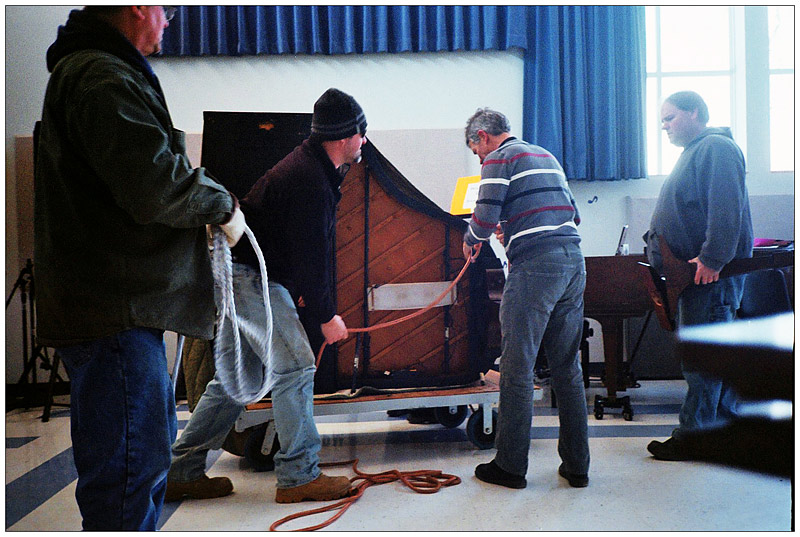 BELFAST - A baby grand piano donated by local businessman Bruce Starrett arrives at Belfast Area High School. Music teacher John Cameron, striped shirt, said new instrument will allow for piano duet recitals without moving a third piano belonging to the school off the auditorium stage for each performance.
BELFAST - A baby grand piano donated by local businessman Bruce Starrett arrives at Belfast Area High School. Music teacher John Cameron, striped shirt, said new instrument will allow for piano duet recitals without moving a third piano belonging to the school off the auditorium stage for each performance.
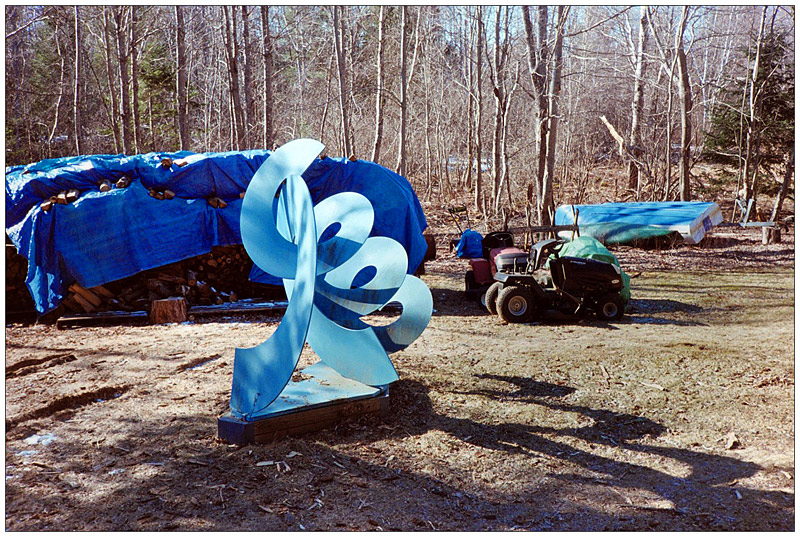 SEARSMONT - Tarp on the woodpile, check. Overturned boat, check. Modernist sculpture ... yes.
SEARSMONT - Tarp on the woodpile, check. Overturned boat, check. Modernist sculpture ... yes.
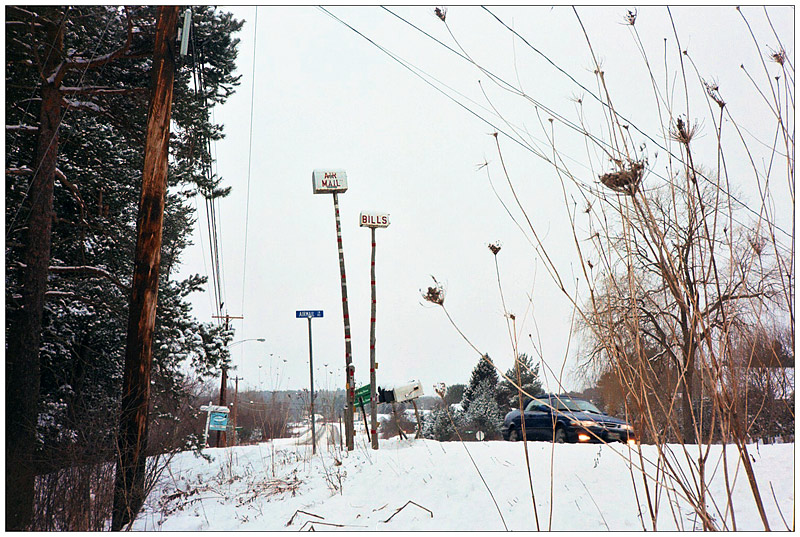 BELFAST - A pair of out-of-reach mailboxes labelled "Bills" and "Airmail" erected 30 years ago by Alden Horn, and now a familiar sight along Route 1.
BELFAST - A pair of out-of-reach mailboxes labelled "Bills" and "Airmail" erected 30 years ago by Alden Horn, and now a familiar sight along Route 1.
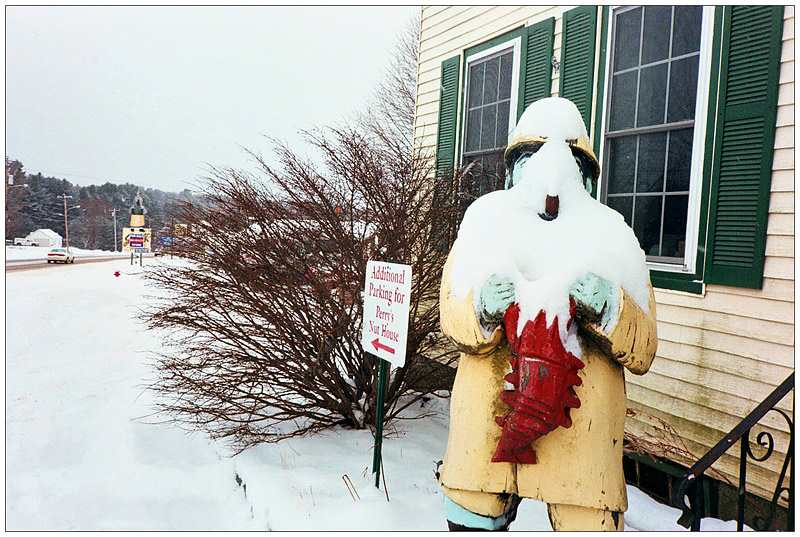 BELFAST - Behind a snow covered fisherman outside Perry's Nut House, the fisherman sign for the Jed's Restaurant is visible. Both local landmark properties are currently for sale.
BELFAST - Behind a snow covered fisherman outside Perry's Nut House, the fisherman sign for the Jed's Restaurant is visible. Both local landmark properties are currently for sale.
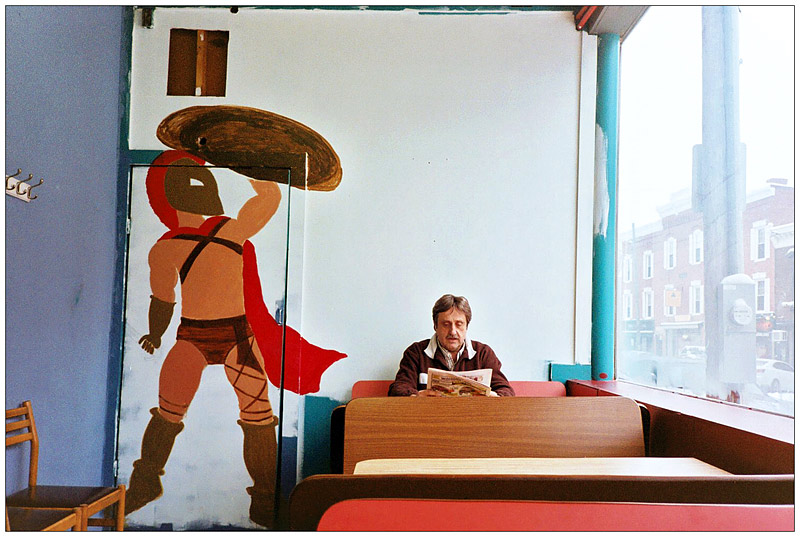 BELFAST - A partially-completed mural of a Spartan warrior at Alexia's Pizza painted by Maleah Chadwick of Searsmont . Owner Ted Rakis, who was born within a mile of the tomb of King Leonidas in Sparta, sits in his customary seat at the restaurant.
BELFAST - A partially-completed mural of a Spartan warrior at Alexia's Pizza painted by Maleah Chadwick of Searsmont . Owner Ted Rakis, who was born within a mile of the tomb of King Leonidas in Sparta, sits in his customary seat at the restaurant.
 The photos below were taken with a 30-year-old, pocket-sized, 35mm camera (an Olympus XA-2). They come from a single roll of film, and with any luck show a bit of life in the Midcoast between the larger stories of the day. Click on any image to see them all. (Photos by Ethan Andrews)
The photos below were taken with a 30-year-old, pocket-sized, 35mm camera (an Olympus XA-2). They come from a single roll of film, and with any luck show a bit of life in the Midcoast between the larger stories of the day. Click on any image to see them all. (Photos by Ethan Andrews)
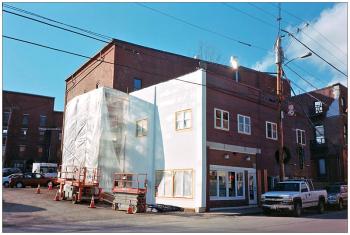 BELFAST - A grant for improvements to low-to-moderate income apartments was the catalyst for a major facelift of the High Street Market building this winter.
BELFAST - A grant for improvements to low-to-moderate income apartments was the catalyst for a major facelift of the High Street Market building this winter.
 NORTHPORT - Sledders at the Northport Golf Club disperse after converging on a boy who had the wind knocked out of him after going over a small jump.
NORTHPORT - Sledders at the Northport Golf Club disperse after converging on a boy who had the wind knocked out of him after going over a small jump.
 ISLESBORO - Looking south from Pendleton Point at the southern tip of the island toward North Haven.
ISLESBORO - Looking south from Pendleton Point at the southern tip of the island toward North Haven.
 ISLESBORO - Headlights illuminate the safety net at the front of the Margaret Chase Smith on the last ferry trip off the island.
ISLESBORO - Headlights illuminate the safety net at the front of the Margaret Chase Smith on the last ferry trip off the island.
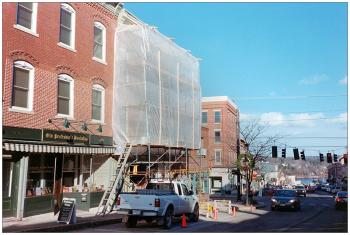 BELFAST - Scaffolding covers Maine Farmland Trust building during renovations that included the addition of a dormer in the rear of the building, a common space-making modification to shed-roofed buildings downtown.
BELFAST - Scaffolding covers Maine Farmland Trust building during renovations that included the addition of a dormer in the rear of the building, a common space-making modification to shed-roofed buildings downtown.
 BELFAST - A Christmas tree in the courtyard of the Waldo County District Courthouse.
BELFAST - A Christmas tree in the courtyard of the Waldo County District Courthouse.
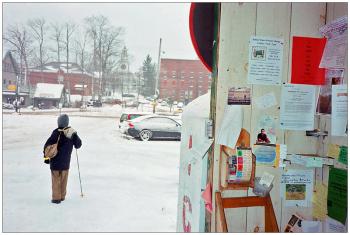 BELFAST - A snowy day, by the message boards at the Belfast Co-op.
BELFAST - A snowy day, by the message boards at the Belfast Co-op.
 BELFAST - A construction of donated lumber erected at the public landing Dec. 31 in preparation for the 2012-13 New Year's Eve bonfire.
BELFAST - A construction of donated lumber erected at the public landing Dec. 31 in preparation for the 2012-13 New Year's Eve bonfire.
 BELFAST - John Jewell of Bangor, left, interviews Trevor Burleigh of Old Town at McDonald's for a commercial trucking job.
BELFAST - John Jewell of Bangor, left, interviews Trevor Burleigh of Old Town at McDonald's for a commercial trucking job.
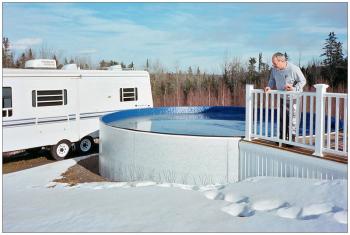 BELMONT - Jon Pinkham looks to his snowy yard for a fence post cap that went missing in January, likely after a storm.
BELMONT - Jon Pinkham looks to his snowy yard for a fence post cap that went missing in January, likely after a storm.
 WINTERPORT - Horses in an enclosure near Route 1A.
WINTERPORT - Horses in an enclosure near Route 1A.
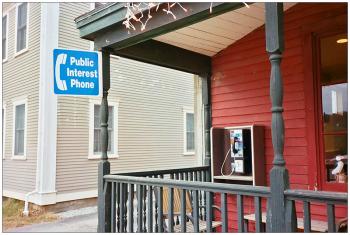 SEARSMONT - A pay phone by another name at Fraternity Village Store. A 2005 Maine law allowed citizens to petition for a "public interest" pay phone in areas where private services had pulled out of the disappearing pay phone market.
SEARSMONT - A pay phone by another name at Fraternity Village Store. A 2005 Maine law allowed citizens to petition for a "public interest" pay phone in areas where private services had pulled out of the disappearing pay phone market.
 PROSPECT - The Verso Paper Co. mill in Bucksport, seen at dusk from the Propsect side of the Penobscot River.
PROSPECT - The Verso Paper Co. mill in Bucksport, seen at dusk from the Propsect side of the Penobscot River.
 LINCOLNVILLE - Two curves.
LINCOLNVILLE - Two curves.
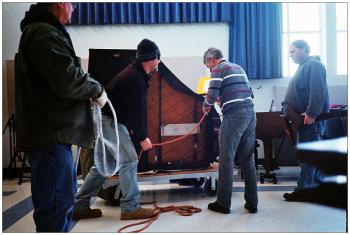 BELFAST - A baby grand piano donated by local businessman Bruce Starrett arrives at Belfast Area High School. Music teacher John Cameron, striped shirt, said new instrument will allow for piano duet recitals without moving a third piano belonging to the school off the auditorium stage for each performance.
BELFAST - A baby grand piano donated by local businessman Bruce Starrett arrives at Belfast Area High School. Music teacher John Cameron, striped shirt, said new instrument will allow for piano duet recitals without moving a third piano belonging to the school off the auditorium stage for each performance.
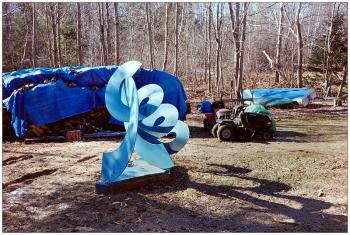 SEARSMONT - Tarp on the woodpile, check. Overturned boat, check. Modernist sculpture ... yes.
SEARSMONT - Tarp on the woodpile, check. Overturned boat, check. Modernist sculpture ... yes.
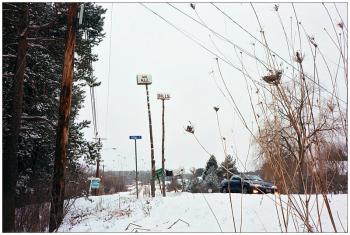 BELFAST - A pair of out-of-reach mailboxes labelled "Bills" and "Airmail" erected 30 years ago by Alden Horn, and now a familiar sight along Route 1.
BELFAST - A pair of out-of-reach mailboxes labelled "Bills" and "Airmail" erected 30 years ago by Alden Horn, and now a familiar sight along Route 1.
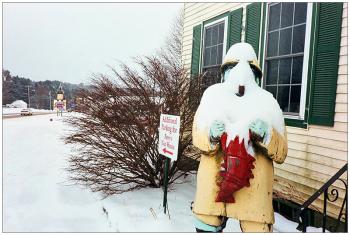 BELFAST - Behind a snow covered fisherman outside Perry's Nut House, the fisherman sign for the Jed's Restaurant is visible. Both local landmark properties are currently for sale.
BELFAST - Behind a snow covered fisherman outside Perry's Nut House, the fisherman sign for the Jed's Restaurant is visible. Both local landmark properties are currently for sale.
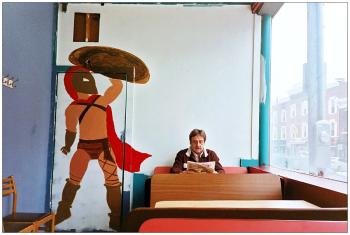 BELFAST - A partially-completed mural of a Spartan warrior at Alexia's Pizza painted by Maleah Chadwick of Searsmont . Owner Ted Rakis, who was born within a mile of the tomb of King Leonidas in Sparta, sits in his customary seat at the restaurant.
BELFAST - A partially-completed mural of a Spartan warrior at Alexia's Pizza painted by Maleah Chadwick of Searsmont . Owner Ted Rakis, who was born within a mile of the tomb of King Leonidas in Sparta, sits in his customary seat at the restaurant.
BELFAST - There's a building just south of Belfast's central intersection best described as home to High Street Market and La Vida Restaurant. It's also home to three apartments on the second floor, which were the catalyst for an exterior makeover that has kept the building shrouded in scaffolding for most of the winter.
Owner Jeff Littlefield had long wanted to spruce up the facade and replace the drafty, single-pane windows. A grant through the city allowed him to do both under the general auspices of energy efficiency, though it might not have happened that way.
In 2011, the city won a $300,000 Community Development Block Grant (CDBG) Housing Assistance Grant aimed at improvements to multi-family rental properties. Initially the grant was earmarked for safety improvements, but the list of eligible upgrades was expanded to include energy efficiency based largely on the recommendation of City Councilor Roger Lee, who felt landlords had no incentive to improve drafty buildings on behalf of tenants who paid their own heating bills.
Littlefield didn't know the history of the debate, but his interest in making the exterior of the building look nicer ended up dovetailing with Lee's idea.
A mason had estimated the cost of re-pointing the brick and recommended a rigid foam covered in stucco instead. The solution would even out a section on the east side of the building that was a patchwork of cinder block and brick. It would also likely make the building more energy efficient.
As part of the grant funded renovations, Littlefield also swapped out the old windows with some newer models with higher R-values.
"So it was killing a lot of birds with one stone," he said.
The tenants in Littlefield's building had always paid for their own heat, but unlike the landlords in Lee's scenario, Littlefield and his wife Natasha who operate the street level convenience store, shared in the misery enough that Jeff could point to the places in the store where a person wouldn't want to linger on a cold day.
The grant was good for up to $10,000 per apartment with a 20-percent match required of the building owner. In Littlefield's case, refacing the whole building meant drawing an imaginary line between the portion relevant to the upstairs tenants and the commercial spaces on the first floor, which were not eligible for grant funding.
Though he described the arrangement as a "win-win," Littlefield noted one potential complication. In order to qualify for the grant, he had to lower his rents and agree to keep them below fair market value for five years. The financials of the current tenants factored into his application, but Littlefield said future tenants would not have to pass the same means test.
In effect, someone who could afford to pay more could take advantage of the capped rent undermining the stated goal of the grant — to improve housing for low-to-moderate income tenants. Then again, a person who could afford more might look elsewhere, he said, and if there are more affordable apartments on the market, maybe it evens out in the end.
"Hopefully my tenants don't go anywhere, so I won't have to worry about it," he said.
The CDBG grant was used for improvements to 41 rental units on nine properties in Belfast, and affected a total of 70 tenants, according to Thomas Kittredge, Belfast's economic development director.
Kittredge said the city was in the process of applying a second time for the grant, which increased to $500,000 this year, when he learned that Belfast had received the grant already twice in five years and was thus ineligible.
Next year, he said the city would be able to apply again, which would mean restarting the process in late 2013 by gauging interest among city property owners.
By early February, work on the High Street Market building had moved from the side to the front of the building. Littlefield had recently put the business up for sale — "not the building, just the business," he said. The decision wasn't prompted by anything in particular. The market was doing well, but he had other businesses ideas and said he wouldn't be able to do both.
By then the south side of the building was fully clad in insulation. Littlefield said he hadn't seen a change in the heating bills but reasoned it was too early to judge. One thing he had noticed was that the interior walls stayed cooler on sunny days, which seemed to bode well for the months ahead.
The first summer the business was open, he said, sunlight coming through the store's south facing windows had melted chocolate bars in a nearby display. Solar blinds solved that problem, but the brick walls still conducted enough heat to make for some hot days in the store, he said.
By the coming summer, at least that much might be different.
Ethan Andrews can be reached at news@penbaypilot.com
Previous Contact Sheets:
Showing up, with a rose or a wreath, between seasons
Broken, built, fixed and reimagined
Sweet Annie rides the bus, and other things familiar and new
A school lockout, a bike (tricked out), a porcupine and a pear tree
Event Date
Address
United States


